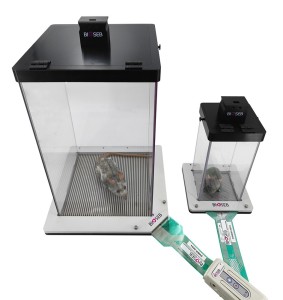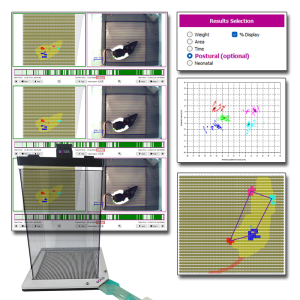Authors
F Lucena, JJ McDougall
Lab
Departments of Pharmacology and Anesthesia, Dalhousie University, Halifax, Canada
Journal
Neuroscience Letters
Abstract
There is strong evidence showing that the activation of peripheral proteinase-activated receptors type 2 (PAR-2) can initiate hyperalgesic and inflammatory responses in the joint. However, to date, there is no report of functional spinal PAR-2 receptors in arthritis models. The primary aim of this study was to evaluate the activity of PAR-2 receptors at the spinal cord by using a potent agonist (FLIGRL) in na•ve animals, and an antagonist (GB83) in different models of joint pain. Saline or FLIGRL (10_nmol) were injected intrathecally in na•ve animals and nociceptive behaviour was evaluated over a 24_h time period by von Frey hair algesiometry. Paw withdrawal threshold decreased from 3 to 24_h and this allodynic effect was blocked by GB83 (90_nmol; i.p.). Acute inflammatory joint pain was induced by injecting 0.5% kaolin/carrageenan (50_microL each) into the right knee joint of male Wistar rats (24_hr recovery). Chronic inflammatory joint pain was modelled by intraarticular injection of FreundÕs complete adjuvant (FCA; 50_microL; 7 days recovery) or chronic osteoarthritis pain by sodium monoiodoacetate (MIA; 3_mg; 14 days recovery). Animals were then treated with either intrathecal vehicle or 10_nmol of GB83 (10_microL); joint pain was evaluated throughout the subsequent 3_h period. The acute inflammatory pain induced by kaolin/carrageenan was not affected by treatment with GB83. Conversely, both chronic arthritis models demonstrated increased hind paw withdrawal threshold after spinal injection of the PAR-2 antagonist. Based on these results, spinal PAR-2 receptors are involved in joint nociceptive processing in chronic but not acute arthritic conditions.
BIOSEB Instruments Used
Dynamic Weight Bearing 2.0 (BIO-DWB-DUAL)
Source :
https://www.sciencedirect.com/science/article/abs/pii/S0304394020306613

 Douleur - Allodynie/Hyperalgésie Thermique
Douleur - Allodynie/Hyperalgésie Thermique Douleur - Spontanée - Déficit de Posture
Douleur - Spontanée - Déficit de Posture Douleur - Allodynie/Hyperalgésie Mécanique
Douleur - Allodynie/Hyperalgésie Mécanique Apprentissage/Mémoire - Attention - Addiction
Apprentissage/Mémoire - Attention - Addiction Physiologie & Recherche Respiratoire
Physiologie & Recherche Respiratoire




































 Douleur
Douleur Système Nerveux Central (SNC)
Système Nerveux Central (SNC)  Neurodégénérescence
Neurodégénérescence Système sensoriel
Système sensoriel Système moteur
Système moteur Troubles de l'humeur
Troubles de l'humeur Autres pathologies
Autres pathologies Système musculaire
Système musculaire Articulations
Articulations Métabolisme
Métabolisme Thématiques transversales
Thématiques transversales Congrès & Meetings
Congrès & Meetings 
